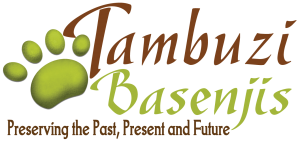Contact
PO Box 776, Heathcote, Vic 3523
Ph: +61 3 9018 9332
Fx: +61 3 5433 3636
Email: Adam Druce
Tambuzi Member of
Puppy Account Login
Pages
- About Basenjis
- About Me
- About Tambuzi
- Basenji Breeders Victoria Australia
- Basenji Puppies
- Basenji Puppies 2021
- Basenji puppies 2022
- Basenji Seniors
- Basenjis
- Basenjis Exported
- Basenjis Retired
- Blog
- Contact
- DNA Collector
- Faqs
- In Memory
- Judge
- Links
- Puppies 2023
- Questionnaire Received
- Questions to ask a breeder.
- Tambuzi Basenjis Health Results
- Tambuzi Roll of Honour
- Team Tambuzi Health
- Tambuzi Basenji Health Management Program
